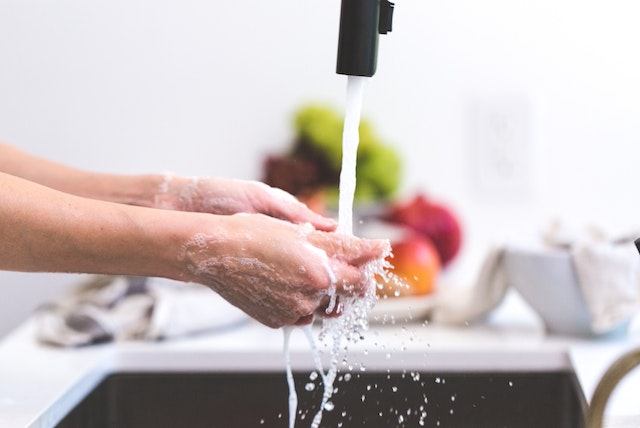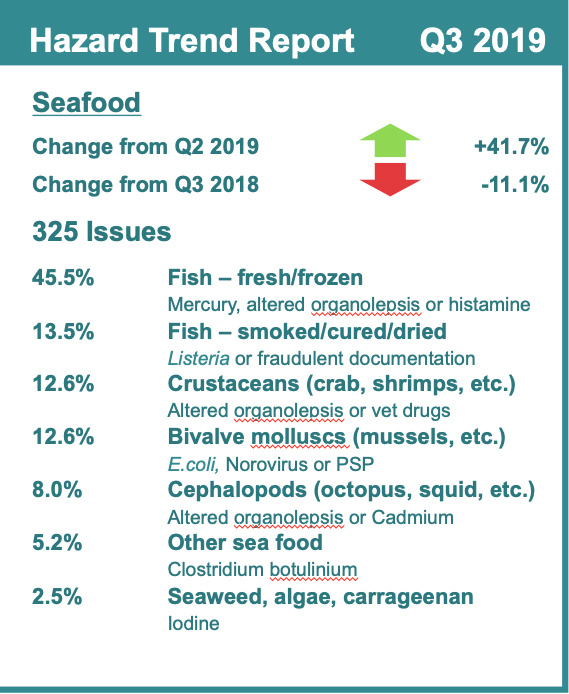Cases of norovirus are reaching new highs, necessitating a review of preventive measures for retail food establishments. After experiencing a lull during the first two years of the pandemic, norovirus cases came surging back in the first quarter of 2022, with outbreaks peaking at over 100 per week in late February, according to data from the Centers for Disease Control and Prevention.[1] Last week, the CDC updated its NoroSTAT page showing a similar increase happening over the past four weeks.
“It’s not a coincidence that U.S. norovirus cases dropped to historic lows in 2020 and 2021, then came surging back as Americans began dropping their pandemic precautions this past spring,” said Chip Manuel, Ph.D., Food Safety Science Advisor, GOJO Industries. “People are fatigued by social distancing, isolation and masking, but it is important to remember that everyday practices like hand and surface hygiene help to control norovirus and many other infectious diseases.”
Food establishments can protect their customers from outbreaks by taking the following steps:
- Keep sick employees home. 70% of norovirus outbreaks are caused by infected foodservice workers,[2]so preventing employees from coming to work sick with norovirus is an important step in preventing outbreaks in foodservice establishments.[3] Adopting sick leave policies and employee wellness screens will reduce the risk of a facility causing a foodborne illness outbreak. Employees that come to work sick can spread the virus to foods, surfaces, customers, and other employees.
- Practice frequent proper hand hygiene and minimize bare-hand contact with food. Inadequate hand hygiene and bare-hand contact with foods are the most frequently encountered contributing factors to norovirus outbreaks.[4]Ensure bare-hand contact with foods is minimized by emphasizing proper glove use. More frequent handwashing, providing handwash stations, and providing alcohol-based hand sanitizers when soap and water are not available, are all best practices related to hand hygiene.
- Disinfect high-touch surfaces regularly. Establishments should continue to disinfect high-touch surfaces since they have a direct carryover to controlling foodborne illnesses, especially norovirus. Examples include frequent disinfection of restroom door handles, handwash sink faucet handles, and restroom stall latches.
- Clean before you sanitize. Proper surface sanitizing requires the surface to be cleaned first to remove all food debris, fats, oils, and other soils. The U.S. Food Code requires that all food-contact surfaces must be cleaned before the sanitizing step.[5]This ensures that the sanitizer solution will remain effective, as these soils can interfere with the sanitizer’s effectiveness.
- Ditch the “rag and bucket” practice. Using a red bucket of sanitizing solution and a reusable cloth is a common way to sanitize tables in a restaurant. But research shows that reusable cloths can easily become breeding grounds for foodborne disease-causing bacteria.[6]They can then spread pathogens to other surfaces throughout the establishment. Sanitizer solution must be monitored throughout the day so it maintains a required concentration level and be changed out when the solution appears dirty, plus the cloths must be stored in the solution, laundered daily, and not used for multiple tasks. Switching to applying a food-contact sanitizer by spray bottle or a disposable wipe can reduce some of the risks associated with reusable cloths.
- Use effective surface products with low toxicity that work quickly. Using ready-to-use products with short contact times (e.g., a minute or less for organisms of interest) can increase compliance with enhanced disinfection protocols, which help reduce the risk of an outbreak within a facility. These products also save your staff valuable time. The EPA categorizes products from I (highly toxic) to IV (very low toxicity.) If possible, select products rated as category IV to limit your staff and guests’ exposure to harsh fumes. When using higher toxicity products follow all “Cautions” noted on the product labeling, as these products may require handwashing after use and/or personal protective equipment, such as gloves, gowns, and eye protection during use.
“In 2022, the U.S. saw the largest number of norovirus outbreaks in more than 10 years, even though the 2021-2022 norovirus season peaked late (late February vs. early January),” said Hal King, Ph.D., Managing Partner, Active Food Safety and Founder/CEO, Public Health Innovations. “In 2023, we can expect even more norovirus infections will be circulating in our communities, and many of these infected persons will likely be workers and customers entering restaurants. The best means to reduce the risk of transmission of norovirus in restaurants is to continue to screen employees for wellness (with a focus on all foodborne disease signs and symptoms), continue disinfection of high-touch surfaces in the restaurant (especially the restroom areas), and ensure proper hand hygiene and glove use before, during, and after food preparation.”
References:
[1] Centers for Disease Control and Prevention, “Reporting and Surveillance for Norovirus: NoroSTAT.” https://www.cdc.gov/norovirus/reporting/norostat/index.html Accessed Dec. 12, 2022.
[2] Centers for Disease Control and Prevention, “Preventing Norovirus Outbreaks.” https://www.cdc.gov/vitalsigns/norovirus/index.html Accessed Nov. 22, 2022.
[3] Duret, S., et al. Quantitative risk assessment of norovirus transmission in food establishments: evaluating the impact of intervention strategies and food employee behavior on the risk associated with norovirus in foods. Risk Analysis, 37(11), 2080-2106, 2017.
[4] Brown, L. G., et al. Outbreak characteristics associated with identification of contributing factors to foodborne illness outbreaks. Epidemiology and infection, 145(11), 2254–2262, 2017. https://doi.org/10.1017/S0950268817001406
[5] U.S. Food & Drug Administration, “Food Code 2017.” https://www.fda.gov/food/guidanceregulation/retailfoodprotection/foodcode/ucm595139.htm Accessed Nov. 22, 2022.
[6] Scott, E. and Bloomfield, S. 1990. Investigations of the effectiveness of detergent washing, drying and chemical disinfection on contamination of cleaning cloths. J. Appl. Bacteriol. 68: 279-283.





















